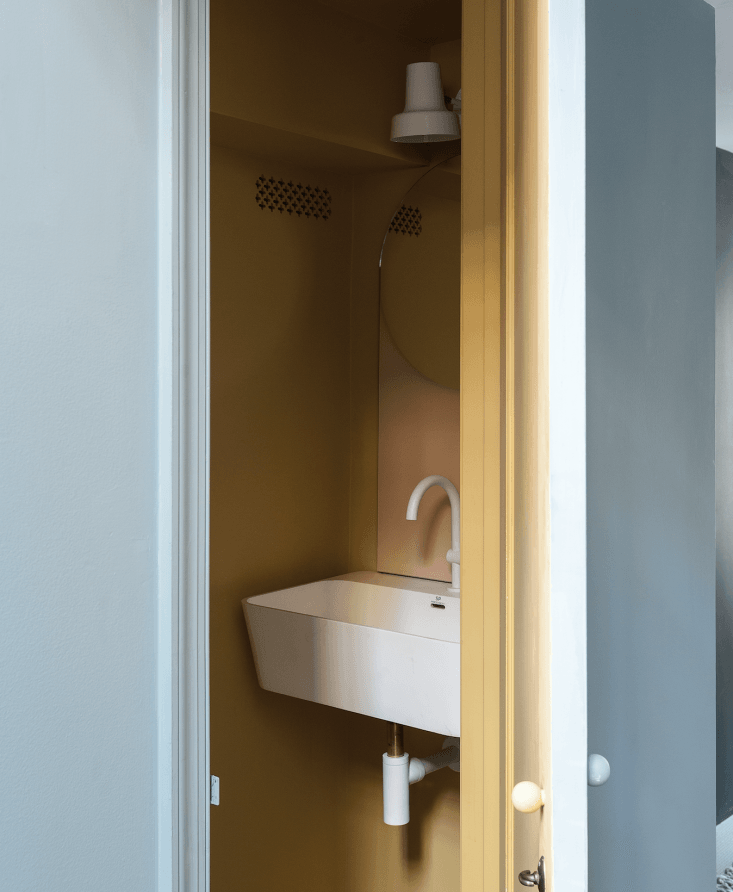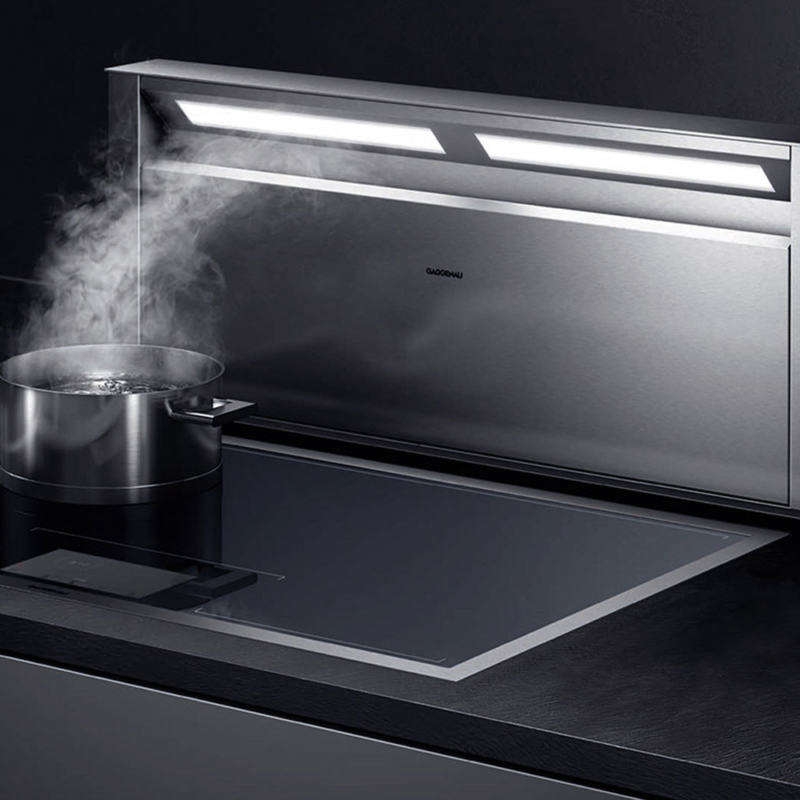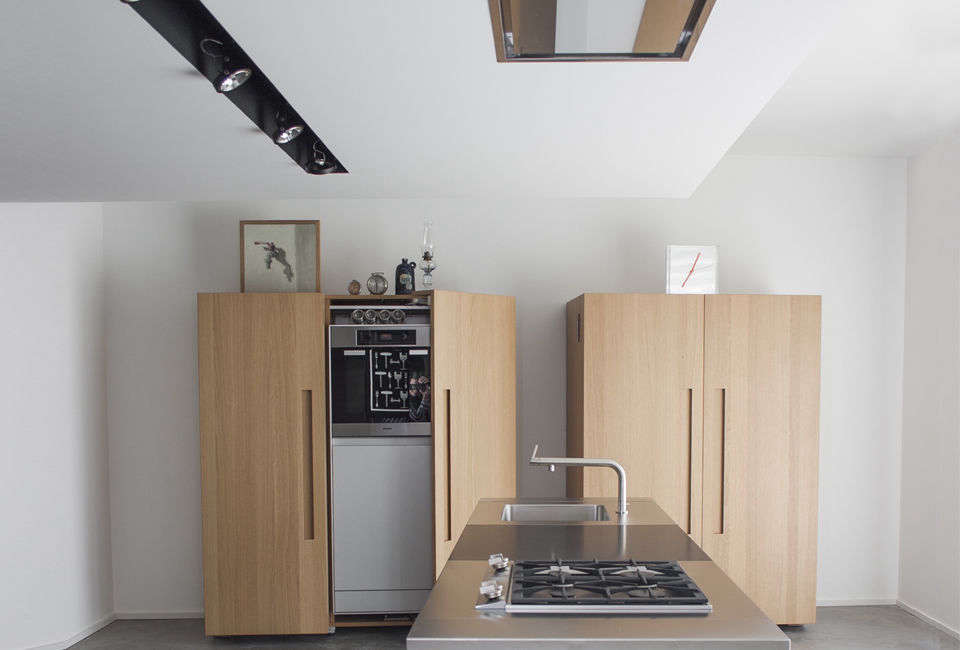In a house, the smallest details matter—and it’s those often overlooked items, such as vent covers, that can transform a dull corner into a cheerful moment. And while HVAC isn’t the sexiest of design topics, it’s an essential part of the home that most of us can’t live without, keeping us cool on sweltering summer days and warm on chilly winter days. Protecting your HVAC system from debris with a good-looking vent cover is a simple and relatively inexpensive upgrade homeowners and renters alike can make.
Here are eight things to know if you’re considering swapping out basic, standard-issue (read: unsightly) vent covers for a more tailored and upscale look.

What is a vent cover?
In the simplest terms, a vent cover is a type of grille that protects the air duct opening and regulates the airflow in forced air HVAC (heating, ventilation, and air conditioning) systems. Vent covers can be installed in ceilings, walls, and floors and can also be used to direct and control the airflow.

What are the different types of vent covers?
It’s important to have a basic understanding of HVAC systems to determine what type of vent cover you’ll need. Basically, air return vents pull air into a large duct that channels the air into the HVAC system, where it is cooled or heated. The heated or cooled air is then pushed back out to the desired rooms through air supply vents. You can identify an air supply vent simply by turning on the HVAC system and placing your hand over the vent to feel air blowing out. The terms below are often used interchangeably, but there are small differences to keep in mind:
Registers
A register is a type of vent cover that contains louvers and dampers, mechanisms that control the direction and volume of air flowing into a space, respectively.
Decorative Vent Covers, or Grilles
A decorative vent cover, commonly referred to as a grille or grill, covers the air ducts and does not have louvers and dampers to adjust the air flow or direction.

What materials are vent covers made of?
Vent covers are fabricated from several types of materials, including plastic, wood, and metals such aluminum, brass, bronze, and steel. The location of the vent cover will determine the type of material that can be used. Floor applications require materials that are heavy duty and designed to bear weight, such as steel, cast iron, or aluminum. Cast aluminum vent covers are lightweight and durable, making them perfect for the floor, ceiling, or walls, while laser-cut aluminum vent covers can only be used for walls and ceilings since they cannot bear weight. Wooden vent covers are typically used on walls and ceiling and are not ideal for floors where there is high foot traffic, unless there is a proper metal sub frame installed to support it. Of course, we always vote for wood and metal over plastic, which is less durable, less eco-friendly, and tends to be uglier, too.
What type of styles and finishes are available?
From traditional and ornate to modern and simplistic, there’s a vent cover for every style of home and architecture. Laser cutting technology allow intricate patterns to be fabricated with ease and provides a myriad of selections to choose from. Finish options are abundant, too. Metals vent covers in satin or polished nickel, aged or polished brass, stainless steel, oil-rubbed bronze, and brushed aluminum are attractive and long-lasting options. Wood vent covers may be stained, painted, or lacquered in classic or cheerful colors. Companies like Architectural Grille offer custom painted finishes, such as dry powder coating, a highly durable decorative finish available in a variety of colors for metal vent covers.

What types of vent covers go where?
The location of your project will determine what type of materials you can specify for your vent covers. Homes located in humid environments or near the ocean will require materials like marine-grade stainless steel or anti-microbial powder coatings that prevent the growth of microorganisms like bacteria and fungi. For rooms that see a lot of moisture, such as bathrooms, aluminum is your best bet since it’s rust-free.
How do you measure for a decorative vent cover?
To determine the dimensions of a vent cover, it’s best to remove the existing covers and measure the length and height of the air duct opening. This measurement is what you’ll need to order a new vent cover. The overall dimensions of the vent cover will be approximately 2 inches larger all around. For existing vent covers that have been painted or caulked, use a box cutter to score the edges to prevent the paint from peeling.
How do I install a vent cover?
Floor registers are incredibly easy to install: They simply drop into the air duct opening in the floor. Registers and grilles that are installed on a wall or the ceiling will require mounting holes and screws for installation. Older homes with plaster walls may have uneven rough openings, so make sure to scrape off any excess paint or caulking around the opening prior so that the new cover sits flush against the wall. Ordering a style with screw holes is recommended for parents looking to child-proof their home and prevent curious toddlers from lifting a grille out of the opening.

How do I maintain my vent covers?
To keep your HVAC system in tip-top condition, it’s important to regularly clean your vents, vent covers, and filters. Make sure to vacuum around floor vents, baseboards, high-traffic areas that collect a lot of dust, and even inside your registers if you have a small vacuum attachment. Vent covers can be removed, wiped down with a damp cloth, or run through the dishwasher. If you have a special finish on the covers, reach out to the manufacturer and ask for cleaning instructions. Don’t forget to cover the vent while the cover is removed. Lastly, change your filters regularly and get your vents professionally cleaned once a year to maintain good air quality in your home.
N.B. For past picks, see Remodeling 101: Architects’ 10 Favorite Vent and Register Covers.
Frequently asked questions
Why should I upgrade or change my vent covers?
Upgrading or changing your vent covers can enhance the aesthetics of your space and improve the overall airflow in your HVAC system. It allows for better air distribution, helps regulate temperature, and can even contribute to energy efficiency.
What types of vent covers are available?
There are various types of vent covers available, including floor registers, wall registers, ceiling registers, baseboard registers, and return air grilles. Each type is designed for specific locations and purposes within your home.
How do I determine the correct size of vent covers to purchase?
To determine the correct size of vent covers, measure the dimensions of the existing vent opening. Typically, the width and length measurements are used to determine the size. It's important to measure accurately to ensure a proper fit.
Can I paint my vent covers to match my decor?
Yes, many vent covers can be painted to match your decor. Metal and wooden vent covers can be painted using appropriate paints or finishes. However, it's essential to follow the manufacturer's instructions and choose paint that is compatible with the material of the vent cover.
How do I remove and replace old vent covers?
Most vent covers can be removed by unscrewing or lifting them off their mounting points. To replace them, simply align the new vent cover with the opening and secure it in place using the provided screws or mounting brackets. Make sure to turn off your HVAC system before removing or installing vent covers.
Can I install new vent covers myself?
Yes, installing new vent covers is generally a straightforward process and can be done by homeowners. However, if you're unsure or uncomfortable with the installation, it's recommended to hire a professional to ensure proper fit and functionality.




Have a Question or Comment About This Post?
Join the conversation